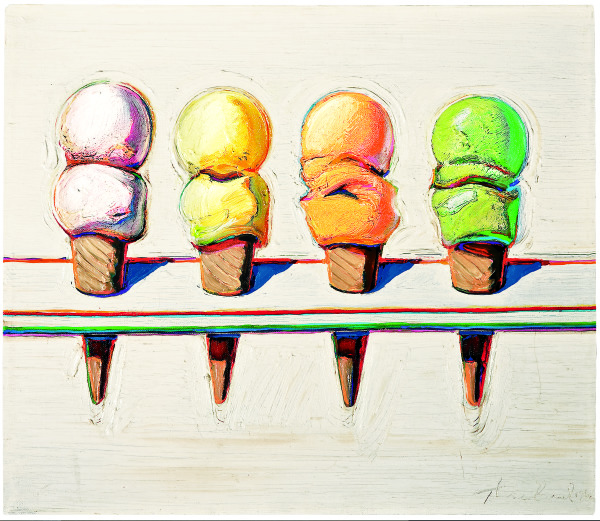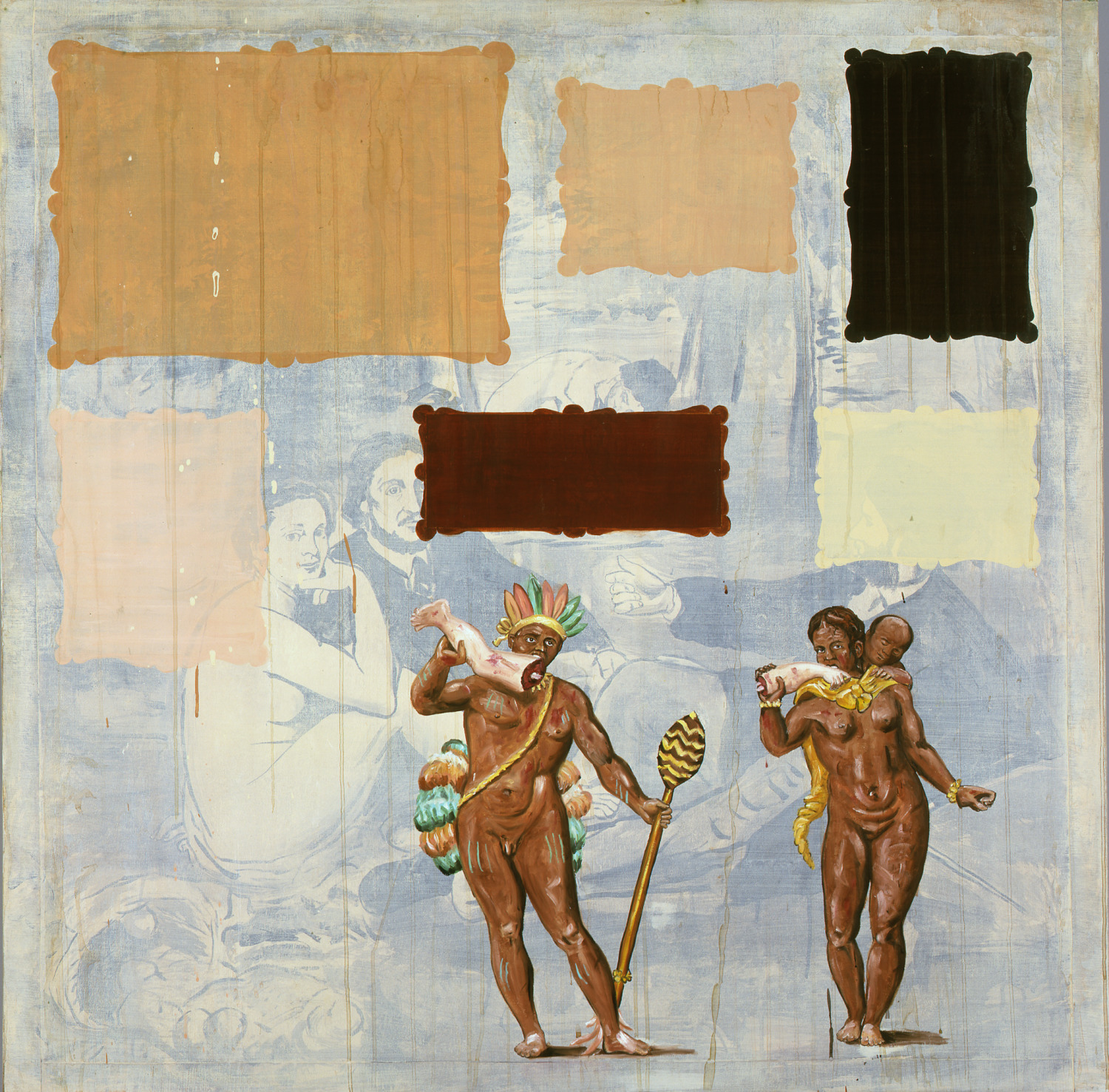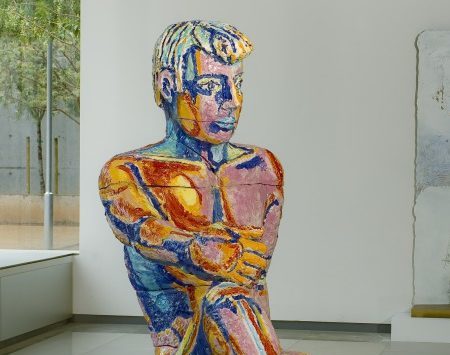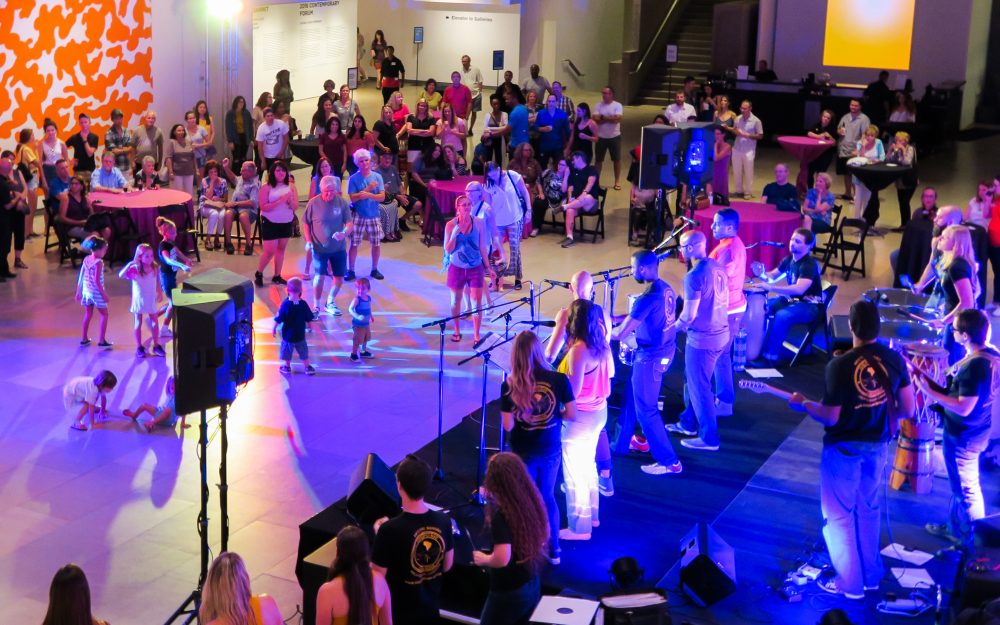Sweet Land of Funk is organized by Phoenix Art Museum. It is made possible through the generosity of the Museum’s Circles of Support and Museum Members.

ABOUT THE EXHIBITION
Beginning in the mid-1950s, a social movement evolved from the bohemian underground cultures of San Francisco and New York. Known as the Beat Generation, these young poets, writers, musicians, and artists rejected the conservative conventions of postwar America. They often met in coffee shops and bars to exchange ideas about Zen philosophy, existentialism, and life’s deeper mysteries.
IMAGE CREDIT
Wayne Thiebaud, Four Ice Cream Cones (Cuatro conos de helado), 1964. Oil on canvas, Museum purchase – COMPAS funds. © 2020 Artists Rights Society (ARS), New York.

By the 1960s, the Beat Generation of San Francisco merged a range of musical, literary, and performative elements together that evolved into an early period of Funk art. Drawn exclusively from the collection of Phoenix Art Museum, the works on view in Sweet Land of Funk capture the individualism and self-expression of the Funk art style and highlight a range of movements from the Bay Area between 1945 and 1980, including Abstract Expressionism, Bay Area Figuration, and Dude Ranch Dada.
IMAGE CREDIT
Enrique Chagoya, An Object at the Limits of Language (Un objeto en los límites del lenguaje), 2000. Acrylic, oil, amate and linen. Gift of Friends of Mexican Art.

In a 1967 article from Art in America, Harold Paris used the phrase “Sweet Land of Funk” to describe the distinction between the “funky” art of the Beat Generation and the Funk art style that emerged in the 1960s. With an emphasis on personal expression, humor, and wit, funk artists used a myriad of strategies to visually respond to the contemporary upheavals in politics, society, and art. Artists such as Jay DeFeo, Wallace Berman, Wally Hedrick, and Deborah Remington broke down traditional barriers of accepted art forms and used unconventional materials to explore the Bay Area’s underground aesthetic. Artists such as Manuel Neri, Joan Brown, William T. Wiley, and Robert Arneson focused on process to emphasize the absurdity and the unrefined aspects of life.
IMAGE CREDIT
Viola Frey, Nude Man (Hombre desnudo), 1989. Glazed ceramic. Gift of Stéphane Janssen in honor of the Museum’s 50th Anniversary. © 2020 Artists Rights Society (ARS), New York.
EXHIBITION SPONSORS

Featuring more than 20,000 objects, the collection spans the globe, bringing the world to our city, and our city to the world.

Discover a world of programs, workshops, and more, and experience your museum in a whole new way.
EXHIBITIONS
On view for a limited time, exhibitions present art from across the centuries and the globe, from iconic fashion to Old Master paintings, contemporary photography to historical objects of Asia.
MORECOLLECTIONS
Featuring more than 20,000 objects, the collection spans the globe, bringing the world to our city, and our city to the world.
MORE